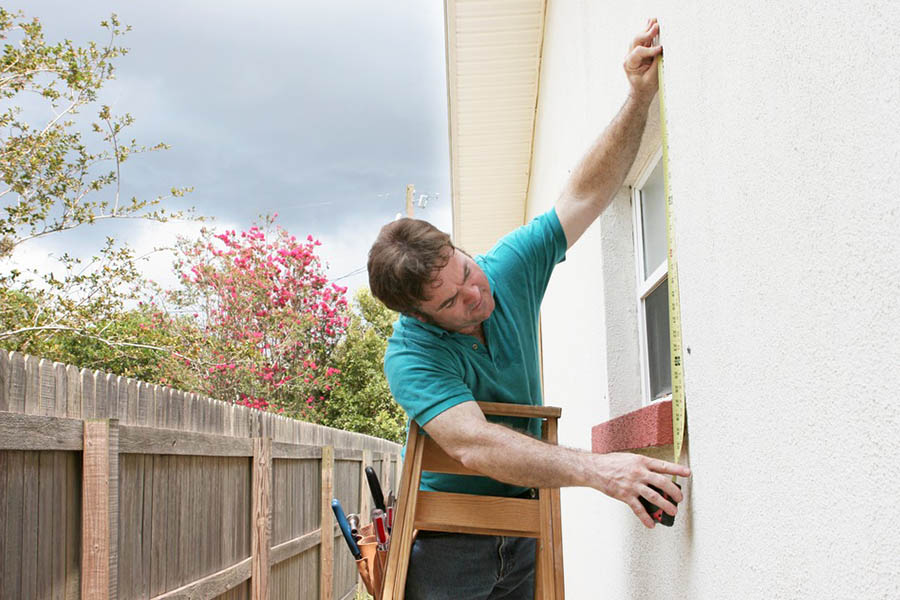The important points
- Preparing a home for winter is extremely important in Canada.
- Most winterizing tasks are simple, and require only some basic maintenance in the fall before temperatures drop.
How to properly winterize your home
1. Check your fireplaces

Everyone loves a blazing fire, but the truth is: open fires indoors are a hazard. There’s always the possibility that they may spread and become uncontrollable.
Make sure the flue is open for proper ventilation when you build a fire in the fireplace, and place a screen around the fireplace to keep sparks from flying out into the room. Burn hardwoods, such as maple or oak, that don’t create as much ash as softer woods. Avoid burning paper, cardboard or trash for the same reason.
2. Chimney maintenance and cleaning
A fire in the fireplace helps to bring warmth and light to a room in the dark of winter. However, if you don’t maintain your chimney, you could have problems. A chimney that hasn’t been cleaned before seasonal fires are lit may mean smoke that wafts back into the house, creating a breathing hazard.
In addition, an unclean chimney will have creosote — the sticky residue from burning wood — built up inside, which can potentially lead to a chimney fire. On top of that, chimneys can clutter up with leaves and birds’ nests, causing dangerous blockages that can lead to smoke and fire.
Also, be sure that your flue closes tightly when the fireplace isn’t in use, or you may feel unpleasant drafts that cause your furnace to work harder. If you’re not planning to use the fireplace much at all, you might consider capping the top. This will keep out both drafts and animals.
3. Check your roof, gutters, and downspouts
Winter weather can wreak havoc with roofs. Constant battering by the elements decays the supports, the shingles, and the insulation, leading to leaks.
Ice dams are also a potential roof-related threat during cold weather. Especially on pitched roofs, falling snow can slide down the slope of the roof and accumulate at the edges, causing icicles or blockages to form on the eaves. This accumulation prevents moisture from running off the roof properly and it may leak into the attic.
Replace worn shingles or tiles. Check flashing to make sure water can’t enter the home. Clean out the gutters with a scraper or spatula, and rinse with a hose. Consider installing leaf guards or adding extensions on the downspouts to direct water away from the home.
4. How do you prevent frozen pipes?
Indoors or outdoors, your pipes are vulnerable when the temperature dips too low. Water freezes inside the pipes, and its expansion may cause the pipes to burst, leaving you to clean up the mess.
Rather than waiting for trouble to find you, track down any pipes that may be exposed to cold air, especially those in the basement or attic, and wrap them with insulation. If a pipe does freeze, take action: open the tap fully and use a hairdryer to warm the pipe. Work your way along it and you’ll find the frozen spot; when you melt the ice, water will gush from your tap.
If you have water pipes running through unheated areas of the house, wrap them with foam rubber sleeves or fiberglass insulation. Shut off the water to your hose bibs with a turnoff valve inside your house, and drain the lines.
Another option is adding heat tape to vulnerable pipes. Heat tape is essentially an electrical cable installed directly onto pipes, that gently warms them when the temperature drops.
5. How to winterize windows

Check your windows. Replace old or inefficient ones to prevent heat from escaping, or seal drafty windows with clear plastic. Hanging thermal curtains can also help to prevent drafts.
Install your storm windows to add an extra layer of insulation, or consider coating your windows with clear film that helps keep out the cold but not the light.
Keep the curtains and blinds open during the day to let sunlight warm the rooms; close them at night to keep the heat from escaping the room.
Fix the cracks. Ten per cent of home air leaks occur around your windows. Prevent leakage by applying weather stripping and caulking or getting an insulation kit. Your energy bill will thank you.
Remove air conditioners that are set in windows so that you can close the windows tightly.
If drafts come in under the doors, use rubber strips to prevent them.
6. Check your heating and furnaces
Check your furnace. Turn it on to make sure it’s working properly. The best time to contact a professional to get your furnace cleaned and tuned is before the weather gets cold. Filters should be changed often during the winter, as dirty filters reduce air flow and can cause fires. And if your furnace is more than ten years old, you may want to consider upgrading to a new energy-efficient model.
Reduce the temperature when you leave the house and when you go to bed to save on heating costs. You can save up to three per cent on your heating bill for every degree you lower the temperature over time. It will also help reduce greenhouse gas emissions.
Buy a programmable thermostat (or a smart thermostat) that can raise and lower temperatures on a schedule. Place your thermostat where it won’t be affected by light, drafts, etc.
Make sure all vents and baseboard heaters are clean so air can circulate efficiently.
Insulate places where heat is lost easily, such as attics, basements and crawl spaces. If insulation anywhere is less than 20 centimetres thick, it’s time to add some.
Close closet doors. There’s no need to heat storage space, unless it contains pipes.
If you use space heaters, clean them prior to winter usage. Dust and debris that build up on your heating coils could cause a fire.
7. Check for other leaks
An easy way to find out where heat is leaking out, and cold is seeping in, is to walk around inside your house on a windy day, with a lit incense stick. Hold it near the usual leaky areas, such as window and door frames, and electrical outlets. When you find the leaks, you may want to install weather stripping, or caulking to seal the gaps. Foam insulators can be installed behind light switches and electrical outlets.
8. Check your ducts
Homes with central heating can lose heated air before it reaches the vents if the ductwork is not properly connected or insulated, especially if it has to pass through any unheated spaces. And remember to have the ducts cleaned every few years to get rid of built up dust and hair.
9. Check your ceiling fans
During the winter, switch your ceiling fans to spin clockwise. This way, they will gently pull air up from the floor, pushing the warmer air at the ceiling out and down. And close your closet doors. Keeping them closed means you’re not heating any unnecessary space.
10. Check your foundation
Rake away any debris, and seal up cracks or other entry points for water or mice.





